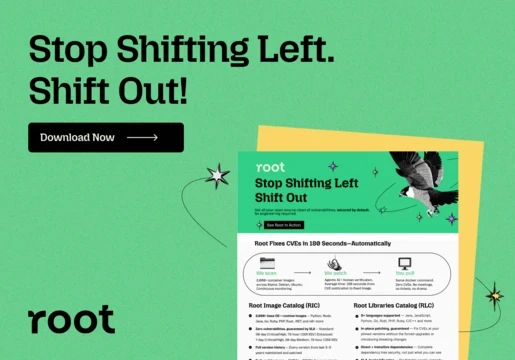To succeed, businesses need to anticipate problems before they erupt, hospitals need to identify patients at risk, and financial institutions can make informed decisions without fear of unforeseen pitfalls. That's where risk analytics come in.
In this article we'll define risk analytics, explain how they work and explore real world examples.

What is Risk Analytics?
Risk analytics is a collection of tools and techniques used to assess and predict risk. It goes beyond identifying potential problems - it uses data to measure the likelihood of those problems and their impact. This allows businesses to make informed decisions about how they manage risk.
Risk analytics uses historical data, current information, and external sources to get a more complete picture of risks. Analyzing past incidents helps to identify patterns and weaknesses in the system. Real-time data, for example, weather forecasts, social media, or equipment readings provides a constant pulse on potential issues. Additionally using external sources such as industry reports, competitor analysis, or government regulations can highlight risks.
Read: Using Data Analytics for Better Risk Management Decisions
How do Risk Analytics Work?
Data analytics help to qualify risk through statistical methods and modelling that assign probabilities and financial values to potential risks.
Techniques like probability analysis help assess the likelihood of a risk occurring. Simultaneously, by building models that factor in various data points, analysts can estimate the potential financial impact of a risk
By assigning probabilities and financial values, risk becomes a more concrete concept. This allows for prioritization where companies can focus resources on mitigating the risks with the highest potential impact. They can then carry out cost-benefit analysis to evaluate the cost of risk mitigation strategies against the potential losses from the risk itself.
Traditionally, risk management was reactive. This means if something bad happened, then steps were taken to prevent it from happening again. However, modern data analytics empowers a more proactive approach.
By analyzing real-time and historical data, programs can identify early warning signs of potential problems and mitigate them.
Utilizing existing company data allows you to model different situations, such as economic downturns or cyberattacks, to develop contingency plans in advance.
Risk Analytics Uses
Risk analytics is a powerful tool used across industries. From banks assessing loan defaults to hospitals predicting disease outbreaks, it transforms data into actionable insights, empowering businesses to make better decisions and navigate uncertainty.
Risk Analytics in Finance
Risk analytics are primarily used in finance. Loan applications are assessed using historical data, credit scores, and other factors to determine a borrower's likelihood of defaulting. This helps banks make informed lending decisions and set appropriate interest rates.
Risk analytics also help banks understand how their investments might be impacted by fluctuations in interest rates, exchange rates, or stock prices. By modelling different scenarios, banks can develop strategies to hedge their bets and minimize potential losses.
It can also help protect your money, by analyzing transaction patterns banks can identify suspicious activity that might indicate fraudulent credit card use or money laundering.
For insurance companies risk analytics can help to set premiums that accurately reflect the risk of a policy holder filing a claim based on historical claims data. They also help insurers predict the potential financial impact of natural disasters like hurricanes or earthquakes. This allows them to set aside adequate reserves and develop strategies to respond to such events.
For investment firms, risk analytics help build diversified portfolios that balance returns with risk tolerance. By analyzing correlations between different assets, they can minimize overall portfolio risk without sacrificing returns. It also helps investors compare the performance of different investments by factoring in the level of risk involved.
Risk Analytics in Healthcare
The healthcare industry is rapidly embracing risk analytics to improve patient care, optimize resource allocation, and navigate a complex environment.
By analyzing patient data, risk analytics can identify individuals at high risk for developing chronic diseases like diabetes or heart failure. This allows for early intervention and preventive measures.
Hospitals use risk models to predict which patients are more likely to be readmitted after discharge. This allows for targeted post-discharge care plans, reducing readmission rates and improving patient outcomes.
Risk analytics can be used to personalize treatment plans by tailoring them to a patient's specific risk factors and genetic makeup.
Predicting patient demand and hospital admissions allows for better staffing decisions and resource allocation. This helps hospitals avoid bottlenecks and ensure efficient use of beds, equipment, and staff.
By analyzing real-time data on emergency room visits, social media trends, and even weather patterns, risk analytics can help predict and prevent the spread of infectious diseases. Risk models can help public health officials prioritize vaccine distribution efforts by identifying populations at highest risk for a particular disease.
Risk Analytics in Cybersecurity
Risk analytics plays a crucial role in protecting organizations from cyberattacks. It helps security professionals shift from a reactive stance to a proactive one.
By analyzing network data, system configurations, and threat intelligence feeds, risk analytics can pinpoint weaknesses in an organization's defences, allowing them to prioritize patching and security updates.
Advanced analytics can identify patterns and trends in malicious activity. This enables security teams to anticipate potential attacks and take preventive measures.
Risk analytics also help to assess the likelihood and impact of different cyber threats, allowing security teams to focus their resources on the most critical risks.
By transforming data into actionable insights, risk analytics empowers businesses to move from reactive risk management to proactive risk mitigation.
From predicting disease outbreaks in healthcare to identifying vulnerabilities in cybersecurity, risk analytics equips organizations to navigate uncertainty, optimize decision-making, and achieve their goals.
As technology evoves the potential applications of risk analytics will only grow, shaping a more resilient and informed future for businesses.







Comments ( 0 )